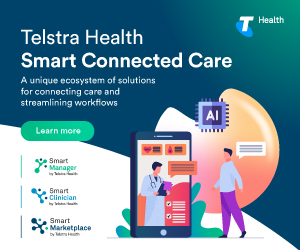How human augmentation is transforming health
Human augmentation is a field of research that aims to improve the capabilities of human beings through technological or medicinal means. Sometimes, this is referred to as human enhancement. With the exponential advance of technology and medicine, much of what we believe to be impossible today may soon be a part of our daily lives.
Prosthetics and Bionics
The field of bionics and prosthetics is just one field where human augmentation is playing a pivotal role. The field aims to replicate or enhance pre-existing human functions through the creation of medical aids that help people regain functions they’ve either lost or never had.
A common example is a myoelectric prosthetic such as an arm or leg. With the help of myoelectric limbs, a person who has lost an arm or leg can regain mobility with the electrical signals generated by their muscles. These prosthetics greatly enhance the physical capabilities of those who are differently-abled with minimal invasiveness. They do not, however, provide the person using the limb any sensory feedback.
Bionic eyes, bionic lenses and mechanical eye implants are other examples, which aim to enhance the ways in which human beings see. Unlike a prosthetic eye, bionic eye implants work within pre-existing eye structures. The bionic eye implant helps pick up and convert light into energy for transportation directly to the brain.
Cochlear implants seek to restore auditory capability, for those who have lost a significant amount of their hearing. In most cases, microelectronic arrays are implanted into a cochlea or even the brain stem to create an artificial link between the ears and the brain.
Robotic exoskeletons, also known as powered exoskeletons have been designed and developed to enhance the physical capability of a person’s entire body. While a robot exoskeleton can be characterised as ‘a prescription device that is composed of an external, powered, motorized orthosis used for medical purposes that is placed over a person’s paralyzed or weakened limbs for the purpose of providing ambulation,’ the applications of exoskeletons reach far beyond restoring strength and mobility for the paralysed. They can be used by firefighters, construction workers, soldiers or anyone doing physically taxing or dangerous work.
Brain-Computer Interfaces (BCI )
Brain-Computer Interfaces (BCI), also known as a Neural Control Interfaces (NCI) or Mind-Machine Interfaces (MMI), allow people control of computers, digital devices, prosthetic devices and even robots — using only their minds.
The interaction is directly between the brain and a machine, bypassing the need for physical interaction. On top of being able to send information and commands to a machine directly from the brain, data can be returned to the human brain as well. The overarching aim of a BCI is to improve human cognition.
As development of BCIs is still in its infancy, they are mostly being tested to help people suffering from paralysis due to spinal cord injury, amyotrophic lateral sclerosis, cerebral palsy and stroke. The most typical way of using a BCI is to create an interaction directly between a person’s brain and muscles (via implant) so a broken or damaged spinal cord is no longer a factor.
Another typical usage of BCIs is in controlling artificial limbs. An artificial limb controlled through a BCI can not only provide a person physical control but also provide sensory feedback.
The application of BCIs are endless. The human imagination is the only limitation of how it can be used. Consider for example, how a person with a BCI implant might be able to access information, extend knowledge with a direct link to resources on the internet and increase their memory capacity not just two-fold, but 100-fold.
Gene editing and Nootropics
There is so much to learn and understand about the human genome, while the fields of gene editing and nootropics are not as developed as bionics or brain-computer interfaces, there are promising developments in this field.
Gene editing , is the power to edit DNA as you please — meaning the possibility of genetic diseases forming or congenital defects can be completely avoided. At the same time, it could lead to designer babies. Gene editing could possibly give us the ability to control eye colour, hair colour and other physical characteristics of unborn children in the future.
Nootropics are a chemical method of enhancing the power of your brain and mental function through a pill, which in some circles is referred to as ‘smart drugs’ or ‘steroids for the brain’. Although prescription nootropics are currently available, and their efficacy is largely unproven and long-term safety evidence is mostly unavailable — the idea that you can improve your brain function and make yourself infinitely smarter is something that the majority of people would go for without hesitation.
With these advances in health technology and medicine, it’s exciting to explore where this may lead next.









